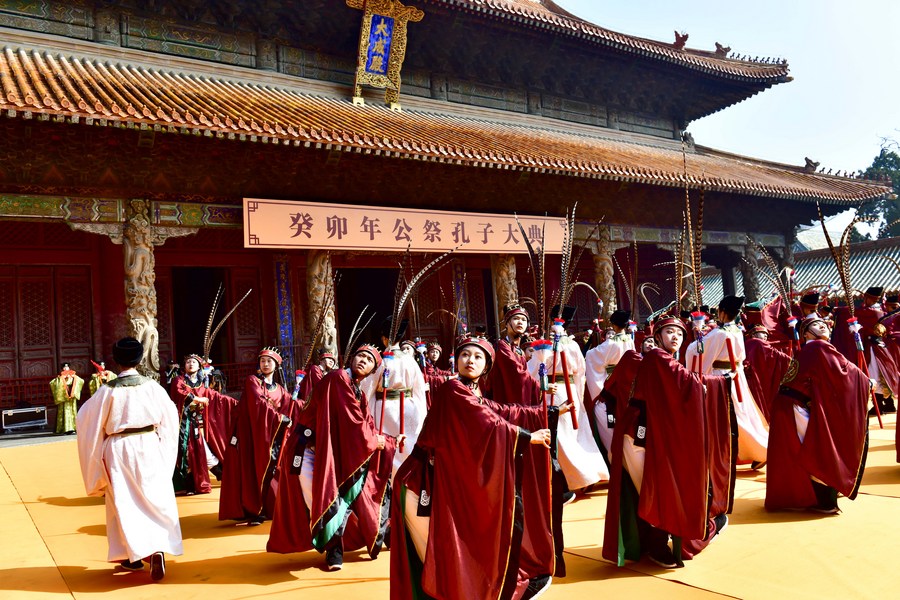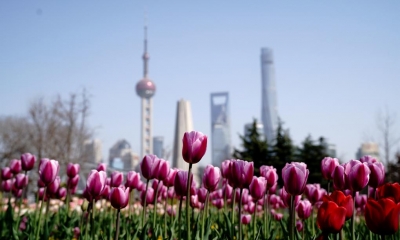Learning from Each Other’s Culture

Successful collaboration across cultures requires understanding, acceptance and respect. This is as true for governments as it is for individuals.
With our world almost broken apart by the forces of geopolitical self-interest, cross-cultural understanding is the glue needed to hold it together. It means recognizing the fact that as people and nations, we are all the same but different.
With China established as the world’s second largest economy, there is now a vast literature about how to do business in China and about cross-cultural understanding. It stresses that China is different, something that my Chinese colleagues would strongly endorse.
Different, though, from what? From the Western norm, it would seem, a perspective surely clouded by at least two falsehoods.
The implicit assumption is that there is a single Western norm, something hard to reconcile with the fact that the structures and policies of the European Union were initially designed explicitly not to be American. Likewise, it seems a perverse idea to anyone who has listened to the diversity of opinions linked to party and culture expressed in debates in the European Parliament.
There are, in truth, as many norms as there are cultures. However, perhaps after more than a century of U.S. hegemony – Hollywood, McDonald’s, Afghanistan – “different” means different from some idealized conception of the American way of doing things. We return to the global implications of this later.
The second falsehood is the presumption that China departs from the norm, where the norm is viewed as doing what is right. For many of us, the right way of doing things is how our mothers and fathers did them. When eating an apple, did they eat the core or not? Did they clean their teeth before or after breakfast or, even not at all?
With at least 3,000 years of continuous culture, many Chinese social norms are traceable to the writings of Confucius and his followers. Confucianism is perhaps best construed as a philosophy, a logical system the aim of which was to create a harmonious society that fostered human well-being.
Elsewhere, historical ideas of righteousness were often passed on by religious leaders. However, multiple wars fought in the name of religious dogma confirm the falsity of a single universal religious truth, a right way of doing things.
As individuals, we encounter different cultures through their representation in the media, by meeting foreigners or, if lucky enough, by traveling to other countries and moving within diverse communities. In each case, we spot difference by reference to our own culture and interpret it through the same lens. This, though, is a distortion.
Teaching at Oxford University, I noticed that Chinese students were incredibly diligent, writing down everything said in class and not challenging a word of the teaching. This behavior, so strikingly different from that of European or American students, was inevitably interpreted with reference to culturally framed beliefs about China.

China, the Western media repeatedly – but wrongly – asserted, is a totalitarian state with a government that seeks to control everything, even people’s thoughts. Therefore, the view commonly held among Oxford academics was that Chinese students were simply afraid, fearful that anything that they said would be reported back to the Chinese government by spies in the classroom.
The privilege of living in China affords a profoundly different understanding. Education is highly prized both as a route to social mobility and to becoming a virtuous person. Chinese poets, scholars and thinkers have been venerated throughout history as sages, passing wisdom down the generations. The teacher teaches what is deemed to be true and the student, listening, absorbs their truth.
This pattern of behavior is not confined to the Chinese classroom. In Chinese businesses, subordinates are reputedly unlikely to contradict their superiors or to voice their opinion. In a paper published by the American Institute of Mathematical Sciences, Shuo Wang and Pasi Fränti, viewing Chinese culture from a Finnish university, conducted interviews with employees of two European subsidiaries of Chinese companies. Local employees considered the Chinese operations to be organized hierarchically like a steep pyramid and characterized by one-way communication, the disempowerment of staff, and salaries based on status not performance.
Wang and Fränti interpret their findings with respect to the concept of “power distance,” how unequally power is distributed within an organization. Be this as it may, it could equally be viewed as a manifestation of Chinese respect for authority. Such respect stems from the Confucian ideal that hierarchy is an expression of virtue, demonstrated by the concern shown for the well-being of persons lower in the hierarchy.
Observing, and seeking to understand difference are important first steps to respecting other cultures. To respect difference is to accept the existence of differing understandings and ways of doing things, to be prepared to accommodate them, and to be open to learning from them.
Since the Enlightenment in the 17th and 18th centuries, European scholarship has contrived to separate ideas from the individuals having them, and then to subject the ideas to forceful critique. This clinical separation of the person from their ideas fits uneasily with the Chinese concept of mianzi, face, with its connotations of self-respect, reputation and social standing.
With knowledge and learning being highly prized, to have one’s understanding publicly criticized risks loss of face. Failing to recognize this in my first venture into collaborative research with Chinese academics, I spent a decade wondering how I had managed to offend a colleague and close friend.
The avoidance of public criticism arguably extends to the critique of policy and government. As a policy analyst trained in Britain to draw attention to policy failure with a view to stimulating improvement, in China I was destined rapidly to lose face. In time, one comes to appreciate that recognizing what is good about policy is to show respect. Only then, is it both appropriate and possible to offer suggestions for how policy might be further improved. The endpoint is the same, the means of reaching it are profoundly different.

Courses on cross-cultural understanding designed for businesspeople typically start with a reminder of the distorting influence of our own culture when encountering another. They then focus on the importance of understanding the beliefs and values of other cultures. The next step is learning to respect cultural diversity. This makes it possible to develop the practical skills necessary to negotiate difference and to capitalize on the resulting multicultural insights.
The four steps underpinning training in cross-cultural understanding are relevant to addressing the geopolitical tensions currently inhibiting international business collaborations and cultural exchanges.
World trade serves as an instructive example. Globalization is currently under threat. Rightly criticized for disproportionately benefiting rich countries and wealthy individuals and corporations, it has nevertheless delivered unprecedented global economic growth. The World Trade Organization (WTO), designed to regulate trade, is subject to the U.S. boycotting of its appellant system. Economic sanctions constraining trade or imposed in retaliation for alleged trade offences are in place, many judged to be illegal, against China and 36 mostly developing countries.
On its establishment in 1995, the WTO inherited and refined a set of principles grounded in U.S.-style liberal economics that encapsulated the Anglo-Saxon and continental European varieties of capitalism. These principles were then externalized as rules and norms – the right way of doing trade – to be imposed on others. They included a market economy based on private ownership, clear and legally enforceable distinctions between public and private sectors, and a commitment to free markets and the rule of law.
China, a socialist market economy integrating market principles and public ownership, acceded to the WTO in 2001 after negotiations lasting 15 years. At that time, China’s GDP was only 13 percent that of the U.S. The expectation of WTO negotiators, viewing China through their distorting cultural lenses, was that China would inevitably become a liberal market economy by 2015.
Now, with China’s economy challenging the U.S. in size, high income countries are recognizing, but not respecting, difference. Instead, China is accused of being a systemic rival seeking to disrupt the WTO. Joint statements from the U.S., EU and Japan are demanding that China effectively abandons its socialist market economy to “address nonmarket orientated policies” that allegedly create “unfair competitive conditions.”
As individuals studying cross-cultural understanding know, acceptance and respect for different cultures precedes successful collaboration. So it is for governments. Difference is not a threat but an opportunity to work together to construct a world trade system that works for the many, not just the few.
 Facebook
Facebook
 Twitter
Twitter
 Linkedin
Linkedin
 Google +
Google +







